#Mountain Tribe
Explore tagged Tumblr posts
Text

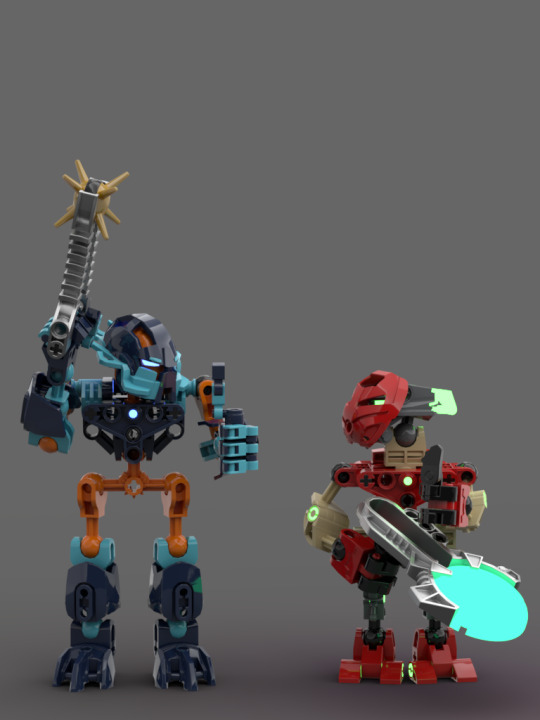
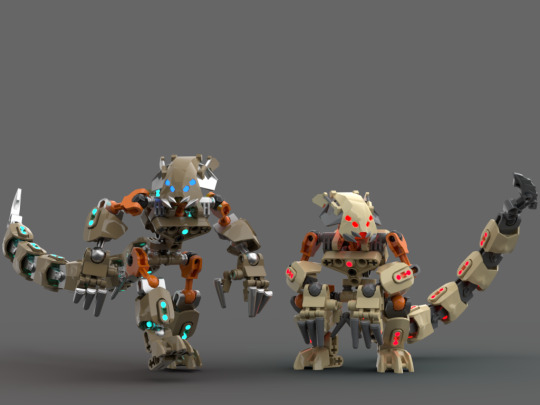
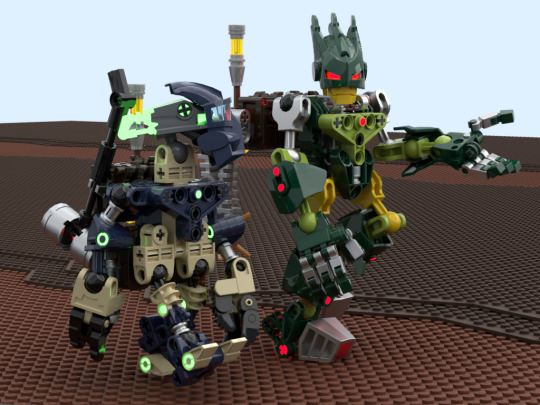

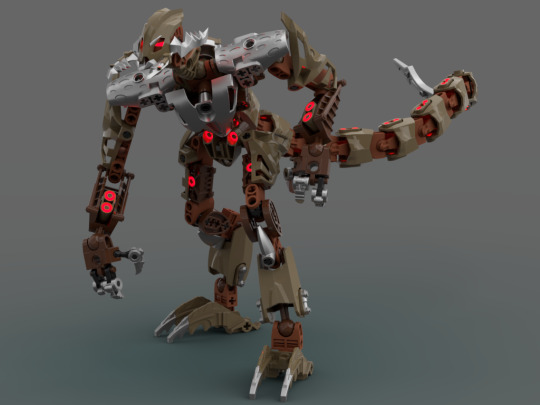

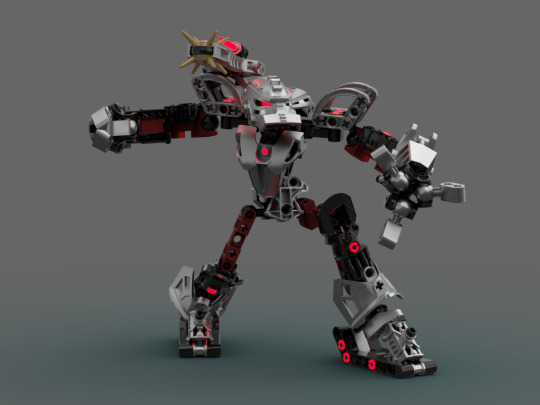

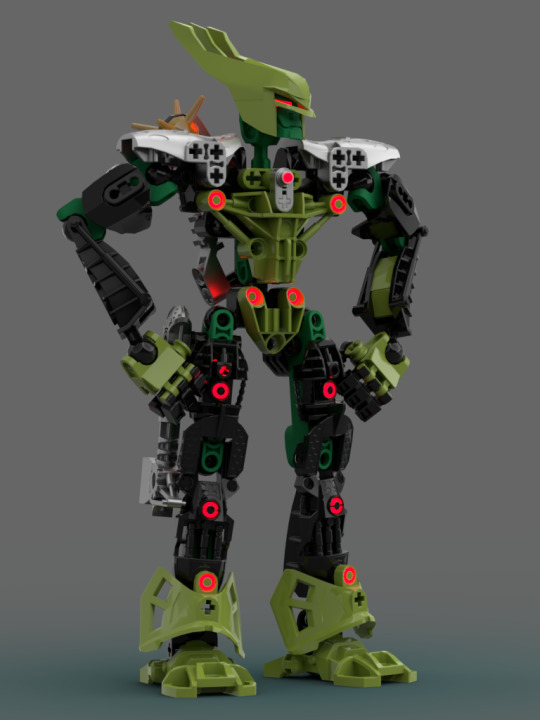
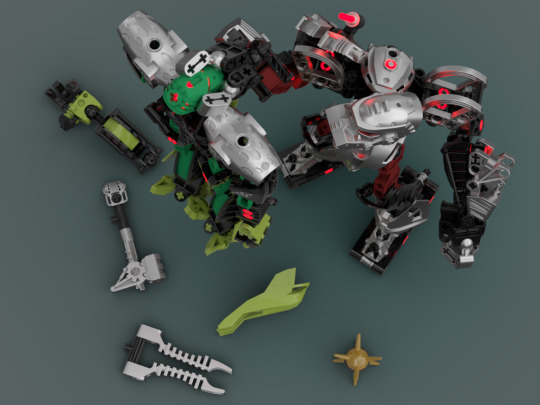
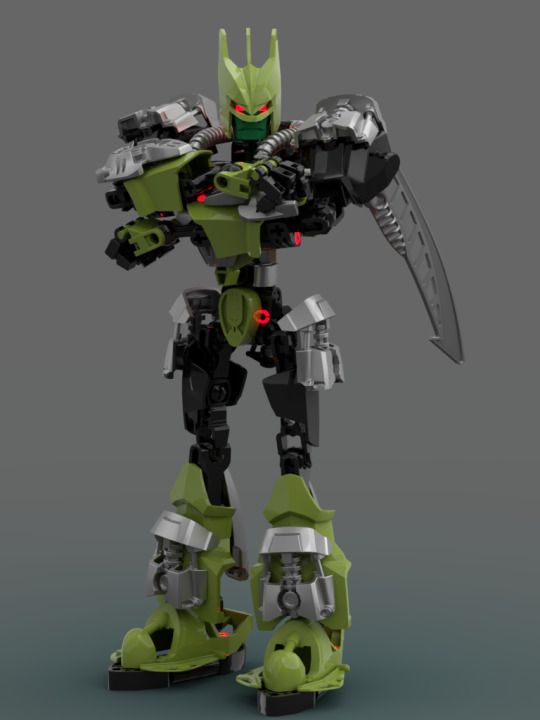

Been giving the 'Matoran Universe' side of things a lot of attention, so decided to give the non MU side of things some love. The Agori
The Natives of Spherus Magna, and later Bara Magna after the Shattering. They are a race of hardy organic beings with naturally metallic skeletons. they are exceptionally long lived, which is only further enhanced by the common use of cybernetic implants in the race.
They are divided into various Tribes across the world, each taking a name relevant to an element important to their society, or naming themselves after where they live.
Zesk A sub-race of Agori, and all that remains of the Sand Tribe. They were modified by the Great Beings into a more beastial form, and slowly over time devolved into little more than animals. Most Zesk however, are able to be acclimated into civilized society under the right circumstances.
Glatorian A species of beings closely related to the Agori, but larger and stronger. They often live in the Triebs alongside Agori. After the Shattering, Glatorian picked up the role of protectors of the Agori. They protected their younger relatives from the various threats of Bara Magna.
Eventually, as things settled and resources began to dwindle, wars broke out amongst the Agori, Glatorian, and the Skrall. Eventually, things settled with the creation of the Glatorian Arenas. Glatorian would fight in the arenas to earn resources for their Tribes.
Though Glatorian is traditionally the name of a race, it has since evolved into a title as well. Anyone who fights in a Glatorian Arena earns the title of Glatorian, regardless of what they are. Agori, Skrall, Matoran, Toa, etc.
Vorox Similar to the Zesk, the Vorox were Glatorian of the Sand Tribe, modified by the Great Beings. Like their smaller cousins, the Vorox devolved into aggressive desert wondering animals. They too can be acclimated into society, but doing so is much more difficult due to their enhanced strength and durability.
Skrall Another close relative of the Agori and Glatorian, though distinct, the Skrall are a race of strong and durable people. They live alongside Agori in the Stone Tribe.
Skrall culture is rather violent, more so than Agori and Glatorian culture. In recent years however, after the Reformation things have begun to mellow out however. Even before then, many individual Skrall have incorporated themselves into other tribes.
Kaadrix is one such Skrall. He was exiled from the Stone Tribe before the Reformation. He wandered alone for a long time, before finding a tribe called the Mountain Tribe. He was able to incorporate himself into the tribe.
Koza is a Skrall warrior that has heavily modified himself through cybernetics. He is much stronger than most other Skrall. He's infamous for his brutality in the Arena, having torn another Glatorian by the name of Telrakk apart.
Gelra a Glatorian of the Water Tribe. She's a strong, burly warrior with an ego to her. She's well known for her outstanding strength, surprisingly able to match Koza in hand to hand combat on numerous occassions, and typically choosing to fight other Glatorian who are using vehicles or mounts.
Telrakk was an up and coming Glatorian for a branch of the Jungle Tribe. He suffered a particularly nasty loss at the hands of Koza, leaving him severely injured. Eventually, much of body was replaced by mechanics as a result. Over time his off shoot of the Jungle Tribe would run into hardship with Bone Hunters, and during a rematch with Koza, his Tribe's home was razed by the bandits. His return to his destroyed home lead him to become
Talrakk the Conqueror an infamous warlord who uses engineered robots as his army. He intends to conquer as much of the Spherus Magna as he can to forcefully protect it from outside threats with his mechanical troops.
#Bionicle#Bionicle Moc#lego#lego moc#Glatorian#Agori#Zesk#Vorox#Skrall#Fire tribe#Water Tribe#Sand Tribe#Jungle Tribe#Mountain Tribe#Stone Tribe#Ice Tribe
66 notes
·
View notes
Text
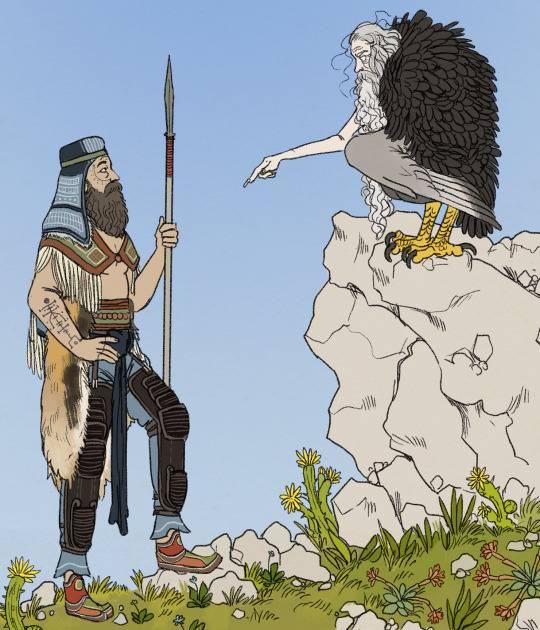
An interaction between Kulyos, the legendary founding hero of the collective Hill Tribes, and the wildfolk witch Bernike, as depicted in folklore.
The collective Hill Tribes all descended from a single population (informally called Kulyites) who migrated south across the Viper seaway from what is now Finnerich, prior to their written history. Here, they found themselves in a new landscape and in both conflict and cooperation with its preexisting inhabitants (a broad collection of tribes, many of which would eventually coalesce into the Wardi and Wogan peoples).
The detail of why this ancestral group fled their homeland depends on the specific tradition. In some cases, it’s a cultural non-issue- they’re here now, have been for hundreds of years, and will be here for hundreds more. In other cases, they describe a local war, a famine, barbarian invaders from the northwest (likely Dain-speakers, possibly a distant leg of the first Burri empire, maybe both), or a combination of all three. All sources agree that cattle and horses were brought on ships with the migrants, though they differ on whether they already had a khait riding tradition or if this (or khait themselves) were adopted from the native population.
The Kulyites were small in number and had neither the power to gain territory by force or negotiation, thus having to settle in some of the few uninhabited territories, the rocky highlands of the northwest. These were difficult lands, far from ideal for farming and grazing, and much of the founding mythology surrounds the first Kulyites learning the ways of this new land and how to thrive where no one had before.
It is said that this original group was led by a young chieftain named Kulyos (this name comes directly from the word 'kulys', the thick mountain plant with yellow flowers seen here, which is important in the regional diet for its fruits and use in tea, and as a symbol of hardiness). He is credited with leading his people to their current lands, establishing many of their core traditions and ways of life, and settling conflicts with the local mountain spirits, thus allowing for his descendants to live there to this day.
Kulyos is very likely to be a based on a real person (possibly the actual chieftain of the original Kulyites, but more likely one of their sons or grandsons), but the details of his life are lost, his history interwoven with myth and allegory. He is usually characterized as well humored and supremely wily, a good leader and beloved by his people, overcoming most challenges with cunning and cooperation rather than brute force. He is wise in the ways of the mountain gods and spirits, and often escapes trouble by means of proper respect to the gods and calculated (if risky) dealings with spirits. He is a mostly venerable figure, but often cast as comically flawed (notably, being lecherous and prone to lying).
One of the most popular and widespread legends is his theft of the wildfolk witch Bernike’s deer and magic cloak.
---
Bernike was the greatest sorcerer of all the Wildfolk, unmatched in power and likened to a god. Her secret was her feather cloak, obtained in a pact with the storm goddess Ariakh and made from the goddess' very own black feathers. Ariakh agreed to provide Bernike with great power in return for routine sacrifice of fine livestock which her sons, the winds, would tend among the clouds. (This likely references practices of some of the proto-Wardi, who may have venerated a form of Ariakh in similar ways). The other condition was that all of Bernike’s magic arts would be contained within the feather cloak, making her powerless without this artifact (this would prevent her from challenging the goddess herself- being made from her body, it could not be used against her).
Bernike ruled over the highest mountain, which had a small pass critical to travel in the area, and took glee in torment of the new human additions to the region. The best grazing in the highlands was upon Bernike's foothills, and this was where the Kulyites settled. In their herding and trading, they would often have to traverse her mountain pass, and she would stop them and demand tribute (usually in form of cattle).
The reason for Bernike's demands was her herd of a hundred scimitar deer, her greatest prizes. These deer were magical in nature- strong enough to be used as mounts and plow animals, faster and more surefooted than any other hooved animal, and their milk could cure disease and impart longevity in those who partook (Bernike herself was over 5,000 years old and as spry as ever). Now that new people with cattle, khait, and horses had entered her lands, Bernike had a new source of livestock for the goddess and no longer would have to offer up her own precious herd.
She would be greedy and merciless with the settlers, demanding exorbitant offerings and inflicting them with terrible curses when they refused. The people all learned to live in fear of her, but had no other option but to submit to her demands in order to pass through her mountain.
After a few years of this, Kulyos had grown quite tired of her demands on his people, and aimed to level the playing field. He had his wife, Brunil (herself a major character in this mythos), disguise herself and take a herd of cattle and ox-drawn cart through the pass. Bernike, of course, appeared and demanded tribute- the woman would only be allowed to pass if she gave the witch her choice of two of her finest cattle, and otherwise would be turned into a biting fly. Perhaps a sparrow, if she was lucky.
Brunil sorrowfully conceded, and begged that Bernike at least be quick about making her choice. Brunil said she was on her way to her sister's wedding, down in the village to the south of the pass. The cattle were to be a gift, and she also had a cask of the finest mead with her that needed to be delivered on time for the ceremonies.
Just as planned, Bernike immediately lost interest in the cattle and instead demanded the mead. Brunil put on a great show of hesitation and sorrow, but eventually relented and allowed the sorceress to take the entire cask. Brunil was allowed to travel onward (‘my sister will be so disappointed’), while Bernike eagerly set about drinking.
Kulyos had followed his wife from a distance and now watched and waited in a copse of trees. The witch drank enough mead to kill a man before she even began to get tipsy, and drank enough to kill two more before she fell into a deep, drunken slumber.
Kulyos then crept up upon her and took the cloak from her unconscious body, donning it over his shoulders. He then approached her deer, which did not flee, recognizing the scent of their master. He mounted on back of one of the bucks, and used it to drive the rest of the herd back down the mountains.
The next morning, Bernike awoke on the hillside, finding herself without her cloak, robbed of her deer, and with a nasty hangover.
She was outraged. This was not the first time she had dealt with Kulyos, and she recognized his scent in the air. She knew exactly who had robbed her. If she were in full power, she could have hunted Kulyos down and turned him into a flea, or made him impotent, or given him dysentery with a mere wave of the hand. Without her cloak, she was powerless, having no magic at all and no more physical capability than any other small (unusually spry, 5000 year old) woman.
She finally relented and contacted Ariakh herself, expecting the goddess to be furious at the theft. Ariakh was indeed furious, but not so much at Kulyos. The man had shown nothing but the proper respect to her, and she was unwilling to punish him for his deed. It was Bernike's failure, and would be up to Bernike herself to put things right. Still, as a favor to her most devoted follower, Ariakh agreed to give Bernike one of her magical arts back to help her along- the power of shapeshifting.
Back in the village, the deer were already showing their worth. Just two bucks had been put to the plow, and they had turned a field in three hours that would have taken an oxen three days. The animals were docile towards their new owner, even letting themselves be milked, and this was the most delicious milk any had ever tasted and could be fermented into the finest of murre.
Kulyos was quite pleased with his theft, but knew this would not be the end of things, and he kept the cloak on his person day and night. He took great care of it, and left out offerings of murre to Ariakh each night that he had it in his possession, to show his continued and utmost respect for the goddess he may have insulted as a byproduct of his theft. He went about his life, always watching and waiting for Bernike's inevitable return.
And so she came, though she was crafty and subtle, and did not make herself obvious. She first took the form of a bat and attempted to fly in through his window and take the cloak as he slept, only to find herself entangled. Those familiar with the legends would know that Kulyos had already bargained with the queen of the spiders to send some of her children into his village, who had cast their webs over the windows and happily ate all the bothersome flies and mosquitoes that had previously plagued his people. Humiliated and harassed by hungry spiders, Bernike fled.
The next day, she took the form of a viper, perfectly camouflaged and waiting in the grass to bite him as he tended to his herds. Kulyos indeed approached, but it was his little son who came near to Bernike. No matter, she thought. She would bite his son and seize the cloak when Kulyos tended to his child's wounds. Ariakh herself was offended at the aggression towards the child, innocent of Kulyos' crime and for whom he had prayed protection, and she sent a crested eagle (a snake eater) to swoop straight overhead.
Kulyos wisely realized a serpent must be in the area, and told his son to stay still. He used his spear to part the grasses in search of it, and at the sight of snake-Bernike, pulled back to stab her. In her panic, Bernike changed shape into a gazelle and fled, thus revealing herself and losing the element of surprise. Now, Kulyos knew for sure that she was after him, and knew she would come in the form of an animal.
Bernike was not stupid, she knew she had lost her advantage. So she waited a month for him to let his guard down, and took the form of a huge, beautiful aurochs bull, trotting and bellowing among Kulyos’ cows as if looking to mate. Surely he would be tempted by such a handsome and valuable animal, and she could take the cloak from him when he got close. And it seemed to have worked, for he excitedly approached with a lasso and slung it around her neck, speaking softly and soothingly as one would to such a wild prize. But instead of trying to lead her off, he tied the other end of the rope around a tree and walked away.
Bernike waited patiently for his return, no doubt in her mind that he was simply getting assistance in leading such a powerful animal away. Instead, Kulyos came back alone, leading his own prized bull (the giant white beast, Pyliod) along with him. As soon as Pyliod caught sight of what he perceived to be a rival bull, he became enraged, and charged at Bernike. She was chased around the tree ten times before she turned into a lion to face him down. The great bull was only more enraged at the sight of a predator, and chased her ten times more (and giving her a nasty jab in the hind, she is said to still bear the scars) before she gave up, turning into a sparrow to slip the rope and flying away. (The trunk of this tree still stands today, with the frayed remnants of an ancient rope around its base).
Now, Bernike waited another month, and took the form of a beautiful young woman, barely-dressed in riverfolk garb and tempting him from the edge of a creek. This attempt would have worked, but Brunil herself, quite annoyed, interceded by chasing the girl away with her staff and giving her husband a stern reprimanding. (“I knew it was her,” Kulyos insisted. "I had a plan.")
Finally, Bernike threw subtlety to the wind and took the form of a huge king hyena, the most powerful beast in the land, and came rampaging into the village. All the people feared this great animal, and even the most powerful warriors would hesitate to approach such a beast head-on. But Kulyos had known the witch would lose her temper at some point or another from the very beginning, and had tasked all the mothers and young children in the village with weaving a great net, so wide as to hold the largest beast, and so finely woven that not even a flea could escape.
Seeing the beast approach, he called to his his three daughters to fetch the net. He stood at the center of the village as bait, running and dodging from the beast while his daughters prepared the trap between two huts. His eldest, Aylian, whistled her signal, and Kulyos ran straight for the net, diving through the small space beneath. The witch in catform was far too big for such a maneuver and barreled right into the net, and Kulyos and his daughters wrapped it around her, trapping her in its clutches.
She fought the net with everything she had, turning into everything she knew how- a great bull, a lion, a tremendous riverdrake, a giant leviathan, a tiny songbird, a mosquito, and so on, but there was nothing she could do to break through. Finally, she turned back into her original shape, a tiny, bearded old woman, and demanded Kulyos approach.
He offered her a deal. If she would swear an oath in front of Ariakh herself of nonretribution and to end her demands of tribute from his people, he would return the cloak and all but two of her precious deer (a doe and stag), and his people would leave offerings of mead and murre at her pass every year on this day to grant them safe passage. Utterly defeated (and finding this offer quite appealing, in spite of her wounded pride), Bernike agreed, and called the great goddess forth.
Ariakh descended in the form of a dragon (a legendary beast with the head of a horned serpent and body of a bird), alighting on the roof of a hut. She plucked a single, massive feather from her breast and threw it to the ground, and Kulyos and Bernike both laid hands on it and swore their oaths. A vow before a goddess would have unspeakable consequences if broken, even for such a mighty sorcerer as Bernike.
Bernike donned her cloak and took her favorite form, that of a gigantic gray eagle. She took to the sky with a fearsome screech, circling the village three times, and then led all but two of her deer, a stag and a doe, back into the mountains.
And with this, the conflict was ended.
---
These deer are said to have become a great boon to the Kulyites. The herds they produced were eventually lost to the people and none of the Hill Tribes have herded deer ever since (that's another story), but their impact lives on. Being magical animals, they could breed not only with each other, but with khait, and produced the small, hardy khait stock still used as mounts and plow animals by the people to this day.
Bernike had only sworn nonretribution and an end to the tributes from Kulyos' people, but she did not swear to never harm them again, and as such all people who claim descent from the Kulyites avoid her mountaintop to this very day (with many more legends describing the consequence to those that do not), and are always sure to bring their yearly offerings of mead and murre to ensure continued safe usage of her pass.
Bernike also only swore to end tribute from his people, and other legends involve her stopping entire invading armies from navigating her pass with (often mischievous and utterly impossible) demands of tribute, and great consequences when these demands are not met.
Bernike is an ambiguous figure in the cultural schema, being feared and respected, an annoyance in her neutrality in (or active inflaming of) conflicts between the Hill Tribes, but credited as a protector of the collective peoples of the highlands. She is often cited as one of the reasons that neither the Burri empires nor the contemporary Wardi empire have ever seized the inner highlands, and no invader ever will.
#hill tribes#folklore#Really niche detail out of everything here but spiders have a place of esteem among the majority of the Hill Tribes and are seen as#lucky and beneficial animals. Spiders will be welcomed into homes and one setting up a web in your window is considered#good luck and protection from malicious spirits#The 'queen of spiders' is a minor mountain spirit and you're supposed to say an apology to her out loud if you accidentally kill a spider#If you kill one without apologizing she'll punish you by depriving you the benefit of spiders in your house#Which is kindof a win-win for arachnophobes
249 notes
·
View notes
Text

when Indoril Nerevar met her
#the elder scrolls#tes#morrowind#almalexia#ayem#war lady and tribal leader#i'm tired of her default look#also i headcanon that before herevar she was a khan of mountain tribes
187 notes
·
View notes
Text

crest of snowy mountain
77 notes
·
View notes
Text

a legacy shared by four
#koinobart#koi fries#original character#oc#sketch#wip#comic idea from middle school#character sheet#character ref#original story#concept art#inspired by mongolian and tibetan cultural clothing#a mountain tribe#unfinished
21 notes
·
View notes
Note
it's a hard trip to make even for folks here in the States but do yourself a favor and look up some pictures of/info about my birthplace: Lake Tahoe. it might be my favorite place I've ever been. absolutely fascinating environment and just stunningly gorgeous.
sneak preview ↓

What an absolutely beautiful lake.

So large that it curves from the curvature of the Earth! So large it's the second deepest lake in the US! A wonderful place to be greatly appreciated, for sure.
#reading the wikipedia page did make me feel a bit sad though#the human history subsection explained that the lake has a rock formation that is sacred to the washoe tribe#interested to see cave rock i check the wikipedia page for it and the image has a tunnel going straight through it :(#im not surprised that this lake is your favourite place youve ever been to though#hard to beat a lake like this! an alpine lake bordered by mountains!#asks#tender-warrior
27 notes
·
View notes
Text
How to Muck the Nuck
I wanna talk about how the final battle against the Nuckelavee went. This monster has been terrorizing Anima for a decade, maybe longer, and when it first shows up it is clearly a force to be reckoned with. But once Team RNJR (Mostly Ren) get their heads in order they take it down semi-easily. This might seem like a bit of an anticlimax, but consider this.
In Mountain Glenn, Dr. Oobleck states that older Grimm are more dangerous because they've developed the ability to recognize threats and pick up on patterns, using the line of elephantine Goliaths as an example. The Goliaths don't attack Vale because they that if they do, the Huntsmen defending the kingdom will wipe them out. They only attack when the surge of pent-up negativity is release, drawing in so many lesser Grimm to help overwhelm the kingdom's defenses.
Now, let's look at the Nuck's attack patterns (Spelling out the name every time is a pain, so I'm abbreviating it)
The first time the Nuck''s presence is felt, it's in the aftermath of Shion Village's destruction. Said destruction was also caused by the raid of the Branwen Tribe, so it's most likely the Nuck taking advantage of the bandits distracting the village's defenders to launch its own attack.
In Ren's flashback, the Nuck attacks his village, a place where hiring a Huntsman was seen as the final desperate move, not the first instinct. Ergo, it was a place that was outside the regular sphere of protection from the kingdoms.
In the present storyline, the Nuck attacks Team RNJR because, from a purely superficial view, they are no threat. Teenaged, runaway students, and Qrow is slowly dying from poison. So it attacks without fear.
But while Team RNJR may not have the strength advantage, they make up for it by fighting smarter. Ren's Semblance allows people to become invisible from a Grimm's negative-radar, giving them the opening to take it by surprise. And then they pin down the Nuck's arms, taking away its maneuverability. This allows Ren to finish the beast off.




So, yeah. I like it when characters win by acting clever.
#RWBY#Greenlight Volume 10#Nuckelavee#Grimm#No Safe Haven#Lie Ren#Ruby Rose#Jaune Arc#Nora Valkyrie#Qrow Branwen#Kuroyuri#Shion#Branwen Tribe#Bartholomew Oobleck#Mountain Glenn#Anima#Vale#Goliath#animation#anime#CGI#Rooster Teeth#Viz#Monty Oum#Kerry Shawcross#RWBY Analysis
35 notes
·
View notes
Text


Little bit - Lykke Li
(Definitely L. Singing this about Cesar at the very beginning)
@fl0ptrait
#ts4#ts4 simblr#ts4 screenshots#sims 4#the tribe#my sims#oc: L.#oc: Cesar Fl0ptrait#push a button pull the trigger#climb a mountain#jump off a cliff#cause you know#baby#i love you love you a little bit#you would do it you would say it#you would mean it and we could do it#it was you and i not only I mm#think i'm a little bit#little bit#a little bit in love with you#but only if you're a little bit#in la la la la la love with me#come here#stay with me#stroke me by the hair#cause i would give anything anything#to have you as my man
42 notes
·
View notes
Text

After years of negotiations, New Zealand has granted Mt Taranaki the same legal rights as a person, recognizing its cultural and ancestral significance to Māori tribes. Under the new law, the mountain will effectively own itself, co-managed by local iwi and the government.
The agreement also addresses historical injustices, including colonial land confiscations, and restores the mountain’s Māori name. Hundreds of Māori gathered as the bill was passed, marking a step toward reconciliation. This follows similar legal recognitions for the Urewera forest (2014) and Whanganui River (2017), reinforcing the Māori belief that nature is a living entity.
#general knowledge#affairsmastery#generalknowledge#current events#current news#upscaspirants#upsc#generalknowledgeindia#upscpreparation#upsccoaching#upsc2025#upsc current affairs#breaking news#world news#news#newzeland#mountains#maori#maori culture#whanganui#conservation#conservatism#nature#trees#forest#landscape#taranaki#new zealand#ancient tribe#trees and forests
14 notes
·
View notes
Text
welcome to
THE EMBRACE
The heart and most secure enclave of the Nora tribe is All-Mother Mountain and the surrounding valley, known as All-Mother's Embrace. It's located southwest of Devil's Thirst, which we know from a Vantage Point to be Colorado Springs. I don't know whether any official sources confirm it, but I am strongly of the opinion (and the Horizon Wiki agrees) that All-Mother Mountain is
CHEYENNE MOUNTAIN S.P.
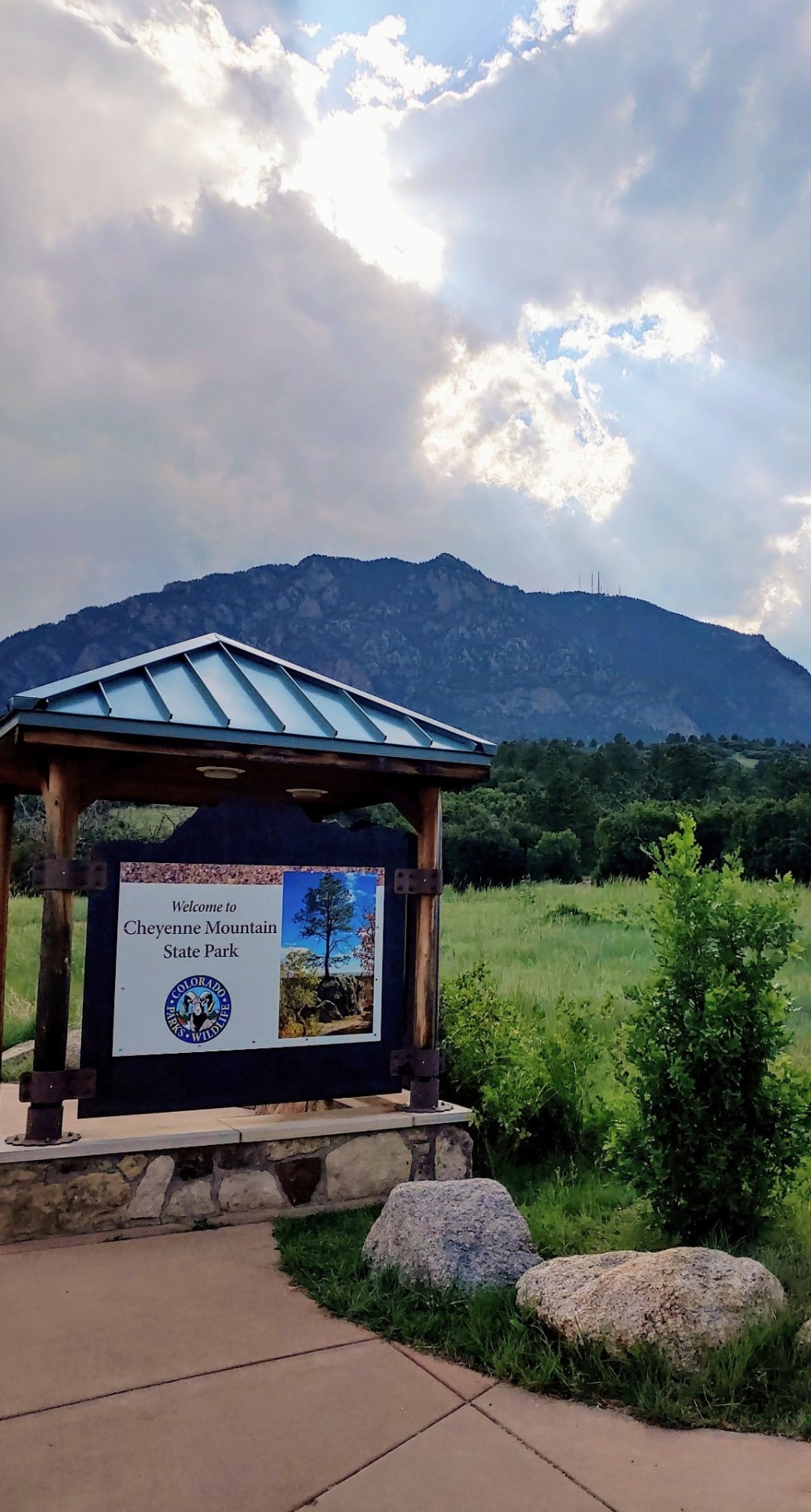
The mountain and park are named for the indigenous people group forcibly removed from Colorado's Front Range in the 1860s.
A hundred years later, as a part of Cold War defense efforts, NORAD constructed a hardened facility inside the mountain – specially designed to be resistant to earthquakes, EMP, and nuclear explosions – for use as its command and control center. More recently, the Cheyenne Mountain Complex has additionally become a United States Space Force installation.
Fans of Stargate SG-1 will recognize the iconic entrance to the facility in which the show set the secret location of Stargate Command.
The Cheyenne people's history stretches from the Great Lakes to the Great Plains, with a large and influential role amongst the tribes of North America. Today, they make up two nations: the Northern Cheyenne in Montana and the Southern Cheyenne in Oklahoma.
The Cheyenne language is in the Algonquian language group, but the name Cheyenne derives from a Dakota Sioux exonym (a name given to a people, place, or language from outside that culture).
Learn more about the Cheyenne people here:
The complex is not open to the general public, but you can visit Cheyenne Mountain State Park if you're feeling nostalgic for the beautiful landscape of the earliest sequences of Horizon Zero Dawn.
Bonus "Personal Touch" Tour Guide Anecdote
My favorite thing about this location is how quickly my mom (not a gamer, but a Stargate fan and a word nerd) put it together when I told her this post-post-apocalyptic people group made their home atop a bunker in a mountain and were called the NORA.
1968 Public Domain Photo
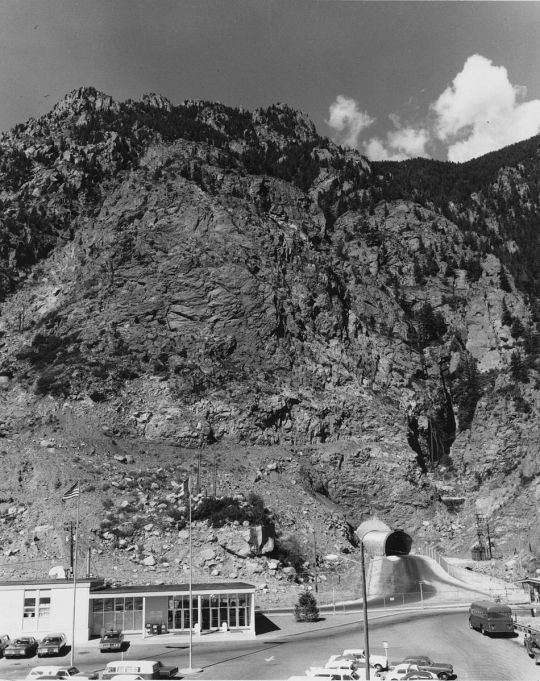
#horizon zero dawn#nora sacred land#gaming tourism#horizon landscapes#horizon locations#guerrilla games#nora tribe#all mother#all mother mountain#all mother's embrace#aloy#varl#rost#sona#vala#teb
33 notes
·
View notes
Text

The Blackfoot Tribe-
I was researching different cultures and found this painting! 🖼️
I like how the colors blend and the detail that was put into it.
#native american#culture#native indian#tribes#indigenous#indigenous culture#western#nature#art#artwork#not mine#painting#beautiful#mountains#horses#horse art#horseblr
12 notes
·
View notes
Text
FAMILY TITLES AMONG THE HILL TRIBES
(ft. various linguistic notes and tangents)
In-universe Brakul’s self-given title of ‘Red-Dog’ is Brakul 'ne-Dainh' in his native language (Bict-Urbinnas dialect of the Highland language group) and Brakul 'Chin-Reyla' in Wardi. Ne-Dainh/Chin-Reyla is not something he treats as or considers an actual surname or identity, just a self-styled nickname. He already has a title.
Family names/surnames are not a native practice among the Hill Tribes (though some clans or individual families have adopted this practice), and all traditionally use titles that designate immediate ancestry, clan and tribe. These full titles are officially given when one comes of age and are spoken aloud in ceremony (with the entire direct male and female lines listed by name, with most traditions expecting 12 generations of each being named).
The function is to cement one’s sense of place in the world, and their place in a direct ancestral line, which puts the person under the full watch and guidance of their ancestors. It's also a critical method of recording lineage- the long held practice of each person memorizing at least 24 total direct ancestors allows for very long, largely accurate records of family history to be kept, with some people able to trace their ancestry all the way back to initial settlement of the Highlands (or even beyond).
Brakul’s full title is:
“Brakul virsum Kuligan et Borunil an Briyonis ne-Taig an Bict-Urbinnas”
Which dead literally translates to “Brakul son of Kuligan and Borunil of the Foothills (of) Red-Cattle, of the North (Urbin/Erubin) River Valley” but has a much richer meaning in the original language.
"BRAKUL VIRSUM KULIGAN ET BORUNIL"
The actual meaning here is closer to ‘Brakul, son of Kuligan and his father’s fathers, and Borunil and her mother’s mothers’.
“Virsum” means ‘child (son/daughter) of’ (the gender is contextual), but implies the person’s status as a descendant of a full male and female line of ancestors. A different word is used if you’re just saying ‘I’m so and so’s son”. The title describes him as a son of his father Kuligan and of Kuligan’s male line, and of his mother Borunil and Borunil's female line.
All ancestors (within this particular system of kinship, divided into one direct male line from the father and one direct female line from the mother, and not including husbands from the female line or wives from the male line) are invoked and credited with the word ‘virsum’. Speaking it as part of the personal title is part of the routine and necessary honoring of one’s ancestors, who watch over their descendants from the afterlife and can temporarily return to the land to guide and protect (and sometimes punish, or teach sharp lessons to) the living.
"AN BRIYONIS NE-TAIG"
The actual meaning here would be understood as ‘clan/people of the foothills where cattle are lit red by the setting sun'.
‘Briyonis’ is the word for ‘foothill’, citing his clan’s specific location being the foothills that form the slopes of the north Urbin river valley. He is of a lesser clan within the powerful North Urbin River tribe. His clan benefits from close affiliation to their more powerful ruling clans located directly in the river valley, which grants them access to a greater variety of cultivated foods, but their actual position in the foothills still renders them predominantly reliant on cattle for subsistence. Clan names referencing cattle or horses are very common, given their frequent centrality to life.
The ‘ne-Taig’ literally means ‘red cattle’, but the ‘ne’ color word for red specifically invokes shades of red seen in and cast by a rising/setting sun. This red cast is culturally regarded as a unique beauty and evocative (and part of the name) of the solar god Hraighne. The foothills his clan is physically located on are a vantage point from which the western horizon is not fully obscured by mountains, and they experience very striking sunsets and are directly touched by the light. This is fairly unique to this location, and is invoked in the clan name and identity. ‘Ne-Taig’ here suggests a visual of grazing cattle illuminated red by the sun as it crosses the horizon.
‘Ne-Dainh’ carries the same implication, a dog illuminated red by setting sunlight. The Wardi language does not have a comparable word for a sunlit red and ‘Chin-Reyla’ really does just mean ‘(orangeish) red dog’ (‘reyla’ is specific to orangey-red colors, which is the closest match he could get. There’s no way to impart the meaning of ‘sunlit-red dog’ in Wardi that is non-clunky enough to be appropriate for a name).
"AN BICT-URBINNAS"
‘an Bict-Urbinnas’ is fairly simple, Bict means ‘north’, and 'Urbin' is the name of the specific river that stems from a northern and eastern tributary. This river has a very ancient name (or a derivative of one) that predates settlement by the Hill Tribes, and its exact meaning is lost.
The root -(n)nas designates a river valley, but has strong implications of being an esteemed and bountiful place, rather than solely a literal geographical descriptor (as the river valleys are centers of power and trade in the highlands). It may be a loanword from the Wardi language family, as its usage is VERY similar in form and function to the Wardi -(n)nos, which also suggests a place of esteem and bounty (more specifically having connotations of a kingdom).
’An’ literally means ‘of’, but in the specific sense of describing the place and identity of a collection of people. ‘an Bict Urbinnas’ would be understood in speech as ‘of the north Urbin River Valley (people)’. The clans historically settled in and around the valley of the North Urbin River form the totality of the Bict-Urbinnas tribe.
The ‘Urbin’ word predates the contemporary Wardi name ‘Erubin’ for the river, the latter of which invokes the semi-mythological founding figure Erub, who himself was of a Wardi tribe located downriver to the south of the Highlands. The real historically extant ‘Erub’ was most likely named Urub after the river, with his cited name shifting over the centuries in folklore, and the Wardi name for the river shifting with it.
‘Erubin’ as a corruption of ‘Urbin’ functions very well in Wardi language due to ‘-bi/bin’ denoting something as a ‘gift’, usually in a more metaphorical sense. ‘Erubin’ is understood as meaning ‘(The river that is) Erub’s gift’, and the Erubin/Urbin river is a key tributary to the much larger Black river, one of the key rivers that feeds the region's wetter and more fertile west. This 'gift' meaning also occurs in the name of the southeastern Imperial Wardi city-state Erubinnos, which is understood as meaning ’((The kingdom that is) Erub’s gift’. He is considered to have conquered and taken the land (from the core city's actual founders, the Wogan people) and established a kingdom there in the early days of warring Wardi tribal monarchies.
#Just dropping this randomly because it's a pretty complete lore dump in my notes app#Family names are a big fucking deal in the Wardi cultural sphere and not having one is associated with being a bastard or otherwise#displaced or unwanted. If pressed Brakul either fully lies and says 'ne-Dainh' (which will just come off as 'oh it's some foreign name')#Or lists his actual title (not a family name but equally important). Sometimes listing all 24 generations if he's particularly annoyed.#It's only strictly necessary to memorize 12 ancestors in each line but it's considered good practice to be able#to cite associated non-direct ancestor husbands/wives/siblings/etc. That's where the tattoos as a mnemonic device comes in#It's easy to memorize 24 ancestors but very difficult to memorize 24 ancestors and at least some of their family members#And remembering and honoring the dead by name is of great importance- both puts you under the protection of more#ancestors (including non-direct ones) and ensures the dead's status in the afterlife is secure (it's believed that fully forgotten#dead leave the celestial fields and can no longer directly intercede with the living- though with some additional nuances to what#constitutes being fully forgotten)#Venerating and remembering the dead is a huge focus of cultural practice and additional methods are used to safeguard#ancestors (and other honored dead without descendants) whose names have been forgotten. There's one yearly holiday focused entirely on#the nameless dead where they are invoked and honored via little straw dolls that are burnt in bonfires high in the mountains so the#smoke is sent up to the Fields. It takes weeks of preparation and tens (maybe hundreds idk I'm bad with scale) of thousands of#dolls will be made each year across the Highlands for this purpose. Honoring them with effigy even without name is usually#considered enough to safeguard their afterlife for at least another year.#Also yeah kinship systems among the Hill Tribes (and very similarly among the Finns) follow a male line/female line system#Only father's father's fathers (...) and mother's mother's mothers (...) are considered direct ancestors (though all four grandparents#are sometimes honored as ancestors even if only two are considered DIRECT ancestral kin- this tradition varies)#Inheritance systems are somewhat matrilineal given that a wife is considered the owner and arbiter of property and a husband is#its protector and active manager. If a man and woman from different clans (or tribes) marry any children will be considered to be of#the clan/tribe of whichever spouse does NOT relocate in marriage.#Whether the husband moves in with the wife or the wife moves in with the husband is dependent on an arbitration process#and the husband (and his family) being able to provide a bride price (which is somewhat of a payment for the land/property#the wife's mother will be passing down to the new husband's management should he move in- and displays his ability to care#for and provide valued assets. A man who can provide a bride price tends to receive greater respect)#This is most commonly going to be livestock (and almost ubiquitously includes a single cattle to be butchered for the wedding feast)#But can include other valuables or assets like land or grain/seeds or etc. There is no intra-Highlands monetary system and the internal#economy is built on trade. So Imperial Wardi currency is mostly useless but is sometimes given in marriages between clans with strong
41 notes
·
View notes
Note
Hello! I absolutely adore Better Bones despite never reading beyond the first series of Warrior Cats. Last time I checked canon, Bramblestar was a kit that nearly died in a fire. So your canon is canon to me and it’s probably better that way.
I do have a question though. How big do your cats think the world is? The meaningful size of their world is from the Lake to the Forest to the Ocean, but I keep thinking of how medieval peasants sometimes had their whole lives uprooted for a crusade thousands of miles away, and wondering what Clan Cats think the real edges are. Do they see Ireland and France as mythical, far off lands filled with fairytale creatures? Do they know that anything exists beyond the oceans at all? The other side of possibility is that kittypets have given them some concept of human geography, and the cats can tell stories about a land further south than a cat could walk in a lifetime, where the stars are unrecognizable and the very moon is upside down.
Have fun with your worldbuilding!
Clan cats believe that the sky, earth, ground, and aquifers below are actually one big mobius strip, and that existence repeats from top-to-bottom. Water that soaks to the bottom ends up in the sky just as steam rises up to it.
Moles dig down so far that their pelts become gently touched by StarClan, and that's why they're so soft without shine.
The world in a horizontal sense is less important, they don't talk to kittypets very much, not enough for cultural diffusion to take place in regards to human geography. They are blissfully unaware of London, let alone anything beyond the coast of Albion.
The closest anyone's really come to learning more was Heartstar, when she was on her Dovewing Quest, seeing trains and a singing cat. She decided that this was not anything she needed to know about.
SO when they see something like the sea, they believe it's a really big lake. Airplanes are probably birds flying far away. Clan cats believe that StarClan is the greatest force in the world, so surely, wherever they choose for the cats to live must be the most beautiful of all. They're a pretty self-absorbed bunch, but more than that, culturally discourage "wandering" cats!
Depending on where they are exactly (this is why Albion isn't exactly the isle of Great Britain and it's been renamed, I'm shuffling some geography) they may also be able to see part of Wales, Ireland, or the Isle of Man from where they usually collect salt. Which just leads to them believing the ocean is just a big, salty lake, given time.
#if the project ever became original I'd probably make the mountain of the Tribe-#and this new ridge that they're getting over at sanctuary lake-#into something that was once a continuous mountain range#but when Holly Leaves and Dove's Wing faced off Dove picked it up and hit her with it. So there's a flat space where there was once mountai#but if it became original there would also be like. Significant historical changes to the entire world based off that collapse#Like. Post-apocalyptic changes#clan culture#better bones au
101 notes
·
View notes
Text
NPC Spotlight: Burned Hide
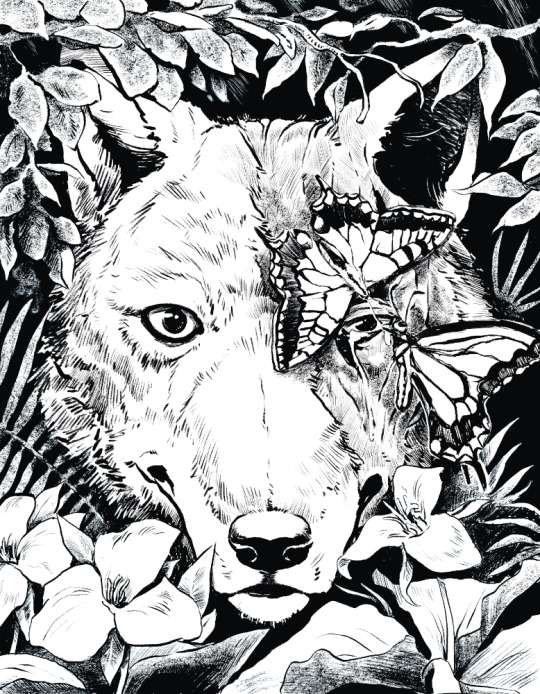
art credit @morggo licensed to use with permission
CW: Animal death, fire, scars, generational trauma beneath the read-more link.
Wolf-Born, Galliard, Athro Older Brother, Master of the Rite
One day, Ape was sitting on the back of a horse, and stopped at the foot of Dume’fa. Ape doesn't know whether to go around her or try to go over her. One asks a nearby wolf, "Wolf. Does she have a rocky face?" And Wolf says that she does. Ape orders the horse onto her face and gets stuck in her logfall and underbrush. Ape shouts to Wolf, "One said she has a rocky face!" And Wolf says, "One did, Ape, all mountains have rocks for faces. Keep sinking and one will find it, this one is certain," And Wolf howls for one’s packmates to gather. — Burned Hide
Despite having had no visible likeness to her kin, she was the direct descendant of Rala Blood-Claw, and the last living descendant of any member of Tawatuy. Born the pup of a lone wolf and her two yearling packmates, her siblings and she had spent their early years catching trout and hunting for grouse, deer, rabbits, and elk in the fall, moving farther into the cascades over winter when the canyons and high desert turned bitter and cold. This had traditionally been the time when Younger Brother roamed into the region along with the Northern Paiute and Yahuskin, though times had changed since then. Her story began with the fall of Gulaka’i. Her grandmother, Aleshanee In-The-Sun, had witnessed numerous other garou begin succumbing to the Bitter Rage. Heeding the warnings of Muskrat, she had worked tirelessly to save as many wolves around Gulaka’i during the Snake War and the war of Rogue River as she could. She had eventually been taken by a Bitter Rage in her attempts to save more tribe members. Her once sweet, playful nature had been reduced to a frothing spittle in 1867. She was survived by her kin-pack, which had lived in the canyons just south of what is now Valley Falls, many miles away from Dead Mountain. When those wolves roamed too close to the cattle ranchers near Paisley, many ate poisoned meat and died painful deaths. A pack of yearlings had dined on grouse earlier that morning and had not gone on the hunt, sparing their lives. Those surviving wolves formed a pack with a number of coyotes; and in the spring of 1899, Burned-Hide was born.
In 1900, Burned Hide's first change, and the first time she'd channel Rala Blood-Claw, occurred simultaneously. A fire had broken out that raged out of control through the canyon and reached the top of the plateau, destroying 75 homes in Lakeview. When the ash began raining down, she tried to locate her pack. Overcoming her own fear, she let her human mind take over, and ran into the fire. The only thing on her mind had been her family and their safety. She ran across hot coals, and through flame, scalding her paws and igniting her fur. Charred, and choking on smoke, she located them sheltering beneath an overturned boulder.
The smoke was too much and she collapsed. That’s when Rala and she had a whispered communion in a language she was surprised to understand. In their first communion, Rala egged her to her feet, and whispered to her what happened to her Grandmother. To their family’s family, and their families. Rala held out the words and lives of the wolves that came before them, and the wolf, breathless and forgetting her pain, reached out with her heart and caught it in her teeth.
The wolf transformed into her hispo form, and feeling her breath returning to her, led her family to safety. Even with her newer, stronger wolf form, she nearly succumbed to the heat and the smoke, had she not seen a family of muskrats fleeing northwards. She had followed them, fighting against all wolf instincts and fording the creek all the way to Thaervarmet. Despite wincing when she stretched her scars wrong, they had only served to add to the beauty of her heart, and year after year, she ran with the wolves. In her own words, the scars were marks of pride that showed her family just what they meant to her. Her life as a garou was one that saw her be one of few wolf-born to live to old age. Her springs were spent with her kin back home in the canyons where she was born. Among the creatures found there, they include 11 mexican gray wolves, 7 coywolves, and 10 coyotes all coalesced into an informal family of sorts, all hunting together with multiple kin leading.
Attributes: Strength 3, Dexterity 4, Stamina 3, Charisma 5, Manipulation 3, Composure 2, Intelligence: 3, Wits: 4, Resolve 4 Abilities: Alertness 3, Assbeating 2, Athletics 3, Brawl 3, Empathy 4, Expression 5, Intimidation 2, Primal-Urge 3, Subterfuge 2, Animal Ken 4, Leadership 4, Melee 2, Performance 3, Stealth 2, Survival 3, Enigmas 2, Forestry 3, Investigation 2, Linguistics 3, Medicine 1, Nation Lore 5, Occult 4, Politics 3, Rituals 4 Gifts: Prey Mind, Beast Speech, Master of Fire, Uncloak the Hidden, Coyote Howl, Scent of Sight, Oaksong, Lore of the Land, Hand of the Earth Lords, Spirit’s Horse, Whisper in the Dark, Catfeet, Distractions, Song of Heroes Rage: 4 Gnosis: 9(3) Willpower: 6 Fluster: 2
Backgrounds: Animism 5 (Champion), Patron 12 (Muskrat 7, Dume’fa 5), Kinfolk 3, Allies 3
Rites: Any Needed Maneuvers: Evasion
Equipment: Medicine bag, Awakened Tarweed Seeds, Awakened Juniper Berries, Awakened Trillium Seeds
Appearance: True to her name, Burned Hide is heavily disfigured, with the majority of her body a lattice patchwork of only partially-healed burn scars covering over 75% of her body. This include some of her eyes, which appears to be blind,doesn’t focus and is constantly weeping tears. Despite this, the shaggy cheek tufts and leaner build present her as a Mexican Gray Wolf, bearing no resemblance to her historic relation. Her expressive eyes are the color of dark juniper bark. Despite her scars, the way she carries herself gives her a sort of Wyld quality that is strangely beautiful, and all conducted beneath a veneer of self-control that belies her passion for expression.
Roleplay Tips: You are bold and unapologetically passionate. You carry the weight of Tawatuy on your shoulders and love in your heart, and become irritable when you’re not feeling heard. Your frequent communion with Rala has instilled in you a deeply-critical view of leadership, and there have been numerous times where you have handed the wheel over to Rala Blood-Claw herself, in a manner of speaking, unleashing a rancorous warrior when you do. You believe she was the true voice of reason in the face of Voruk’ny’ket, and you being the sole descendant of Tawatuy are living proof of that. Your duties to Gulaka’i that pull you away from here are also one of your biggest fears; that you won't be able to keep this family safe. You would give your life to save Gulaka’i, but only if you know your family will be saved. When near the hearts of septs, or in late spring, you are always shaking your head, for all the butterflies that land on your face drink your tears away. Your hidden strength is your Animism. The ability to channel and use up to 5 dice will grant you a base dice pool of 11 in homid form. This could have you, true to Rala Blood-Claw’s form, go toe to toe with Legends and hold her own. That hidden power gives you confidence, despite being small and 76 years old. You’d be a legend in your own right, did you not have Rala’s habit of mouthing off to whoever is in charge.
#world of darkness#werewolf: the apocalypse#dead mountain#werewolf the apocalypse#werewolves#older brother#garou tribes#npc bios
103 notes
·
View notes
Text
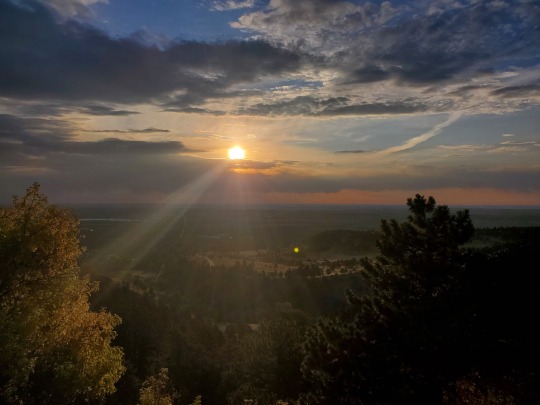
A sunrise years back in Colorado. I miss the mountains.
#sunrise#mountains#nature#sun#Colorado#photography#light#vibe tribe#yes I did smoke weed in the mountains I’m not going to lie about it
54 notes
·
View notes
Photo
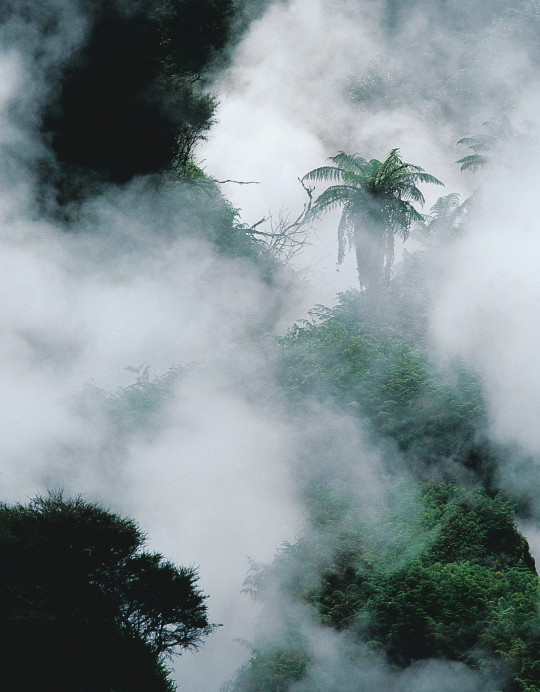
Legends and myths about trees
Forest spirits and natives (2)
Patupaiarehe – Night spirits of the Maori people of New Zealand. Dwell in the darkness deep in the forest.
Patupaiarehe are legendary humanoid cryptids native to New Zealand that hide in forests and are said to have the power to induce a trance and to lure people away. They are supernatural beings (he iwi atua) in Māori mythology that are described as pale to fair skinned with blonde hair or red hair, usually having the same stature as ordinary people, and never tattooed.
They can draw mist to themselves, but tend to be nocturnal or active on misty or foggy days as direct sunlight can be fatal to them. They prefer raw food and have an aversion to steam and fire.
The music of their kōauau and pūtōrino (small flutes), along with their singing of waiata, which songs are sung solo, in unison, or at the octave, occasionally reveals their presence on foggy days. A kōauau is a small flute, ductless and notchless, four to eight inches (ten to twenty centimetres) long, open at both ends and having from three to six fingerholes placed along the pipe.
They could lure people away from safety with the music of their flutes, and had magical powers and special knowledge. Some believe that red-haired Māori are their descendants. Patupaiarehe sometimes taught people magical chants and other skills. They were good at fishing, and one chief spied on them to learn how to make nets.
Patupaiarehe were seldom seen. They were thought to live in several places in the North Island, including in the Waikato, around Rotorua and in the Urewera mountains. They also lived in some places in the South Island.
kōauau sound demonstrations

木にまつわる伝説・神話
森の精霊たちと原住民 (2)
パトゥパイアレヘ 〜 森の奥の暗闇に棲んでいるニュージーランドのマオリ族に伝わる夜の精霊
パトゥパイアレヘは、ニュージーランドに生息する人型の生物で、森に潜み、トランス状態を引き起こし、人を誘い出す力があると言われている。彼らは、マオリ神話に登場する超自然的な存在 (ヘ・イウィ・アトゥア) で、青白い美肌、金髪または赤毛、通常普通の人と同じ背丈で、タトゥーをしていることは無いとされる。
霧を引き寄せることができるが、直射日光が当たると命に関わるため、夜行性で、霧や霧のかかった日に活動する傾向がある。生ものを好み、蒸気や火を嫌う。
コワウアウとプートゥリーノ (小笛) の音楽と、ソロ、ユニゾン、オクターブで歌われるワイアタの歌は、霧の日に時々彼らの存在を明らかにすることができる。コアウアウは、長さ4~8インチ(10~20センチ)、両端が開き、パイプに沿って3~6個の指穴がある、ダクトもノッチもない小さな笛である。
彼らは笛の音で人々を安全な場所に誘い出し、不思議な力と特別な知識を持っていた。赤毛のマオリ族はその末裔であるという説もある。パトゥパイアレヘは時々、魔法の呪文やその他の技術を人々に教えた。彼らは漁が得意で、ある酋長は網の作り方を学ぶために彼らを見張った。
パトゥパイアレヘはめったに目撃されることはなかった。ワイカトを含む、北島、ロトルア周辺、ウレウェラ山脈など、いくつかの場所に生息していたと考えられている。また、南島のいくつかの場所にも住んでいたようだ。
コアウアウ・サウンド・デモンストレーション
#trees#tree legend#tree myth#mountain tribes#patupaiarehe#might spirits#maori#kōauau#pūtōrino#sound of nature#new zealand#nature#art
137 notes
·
View notes